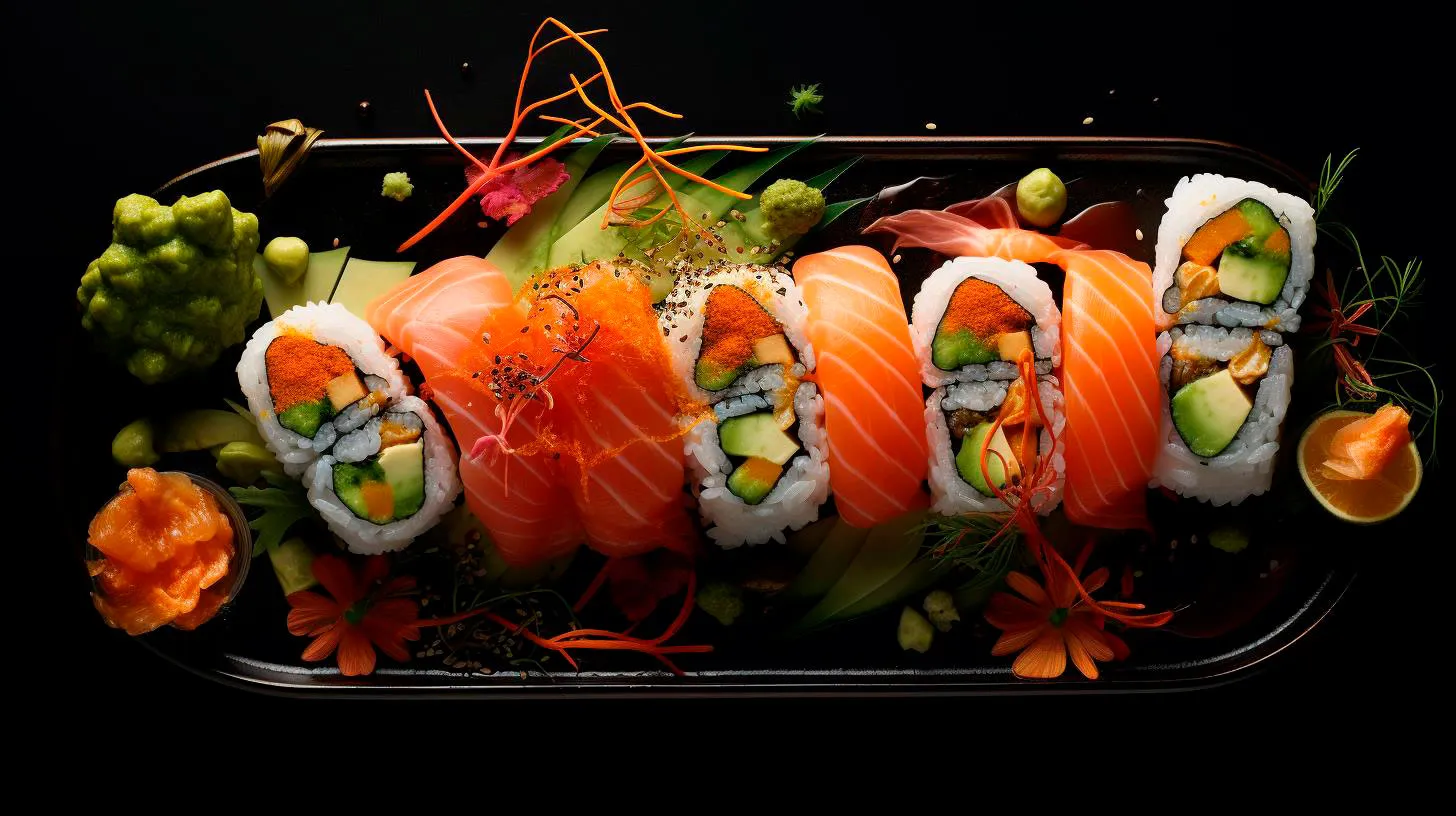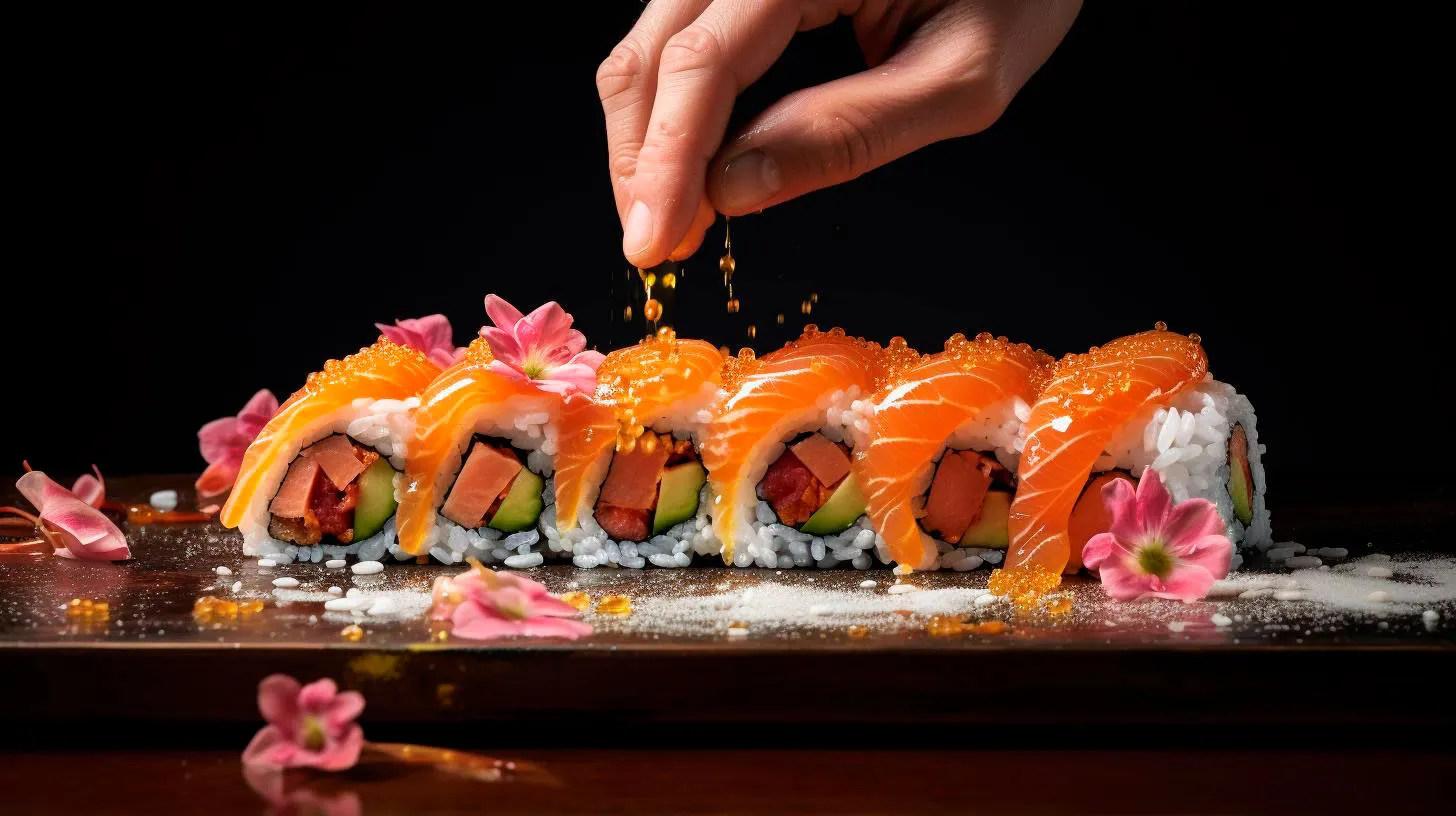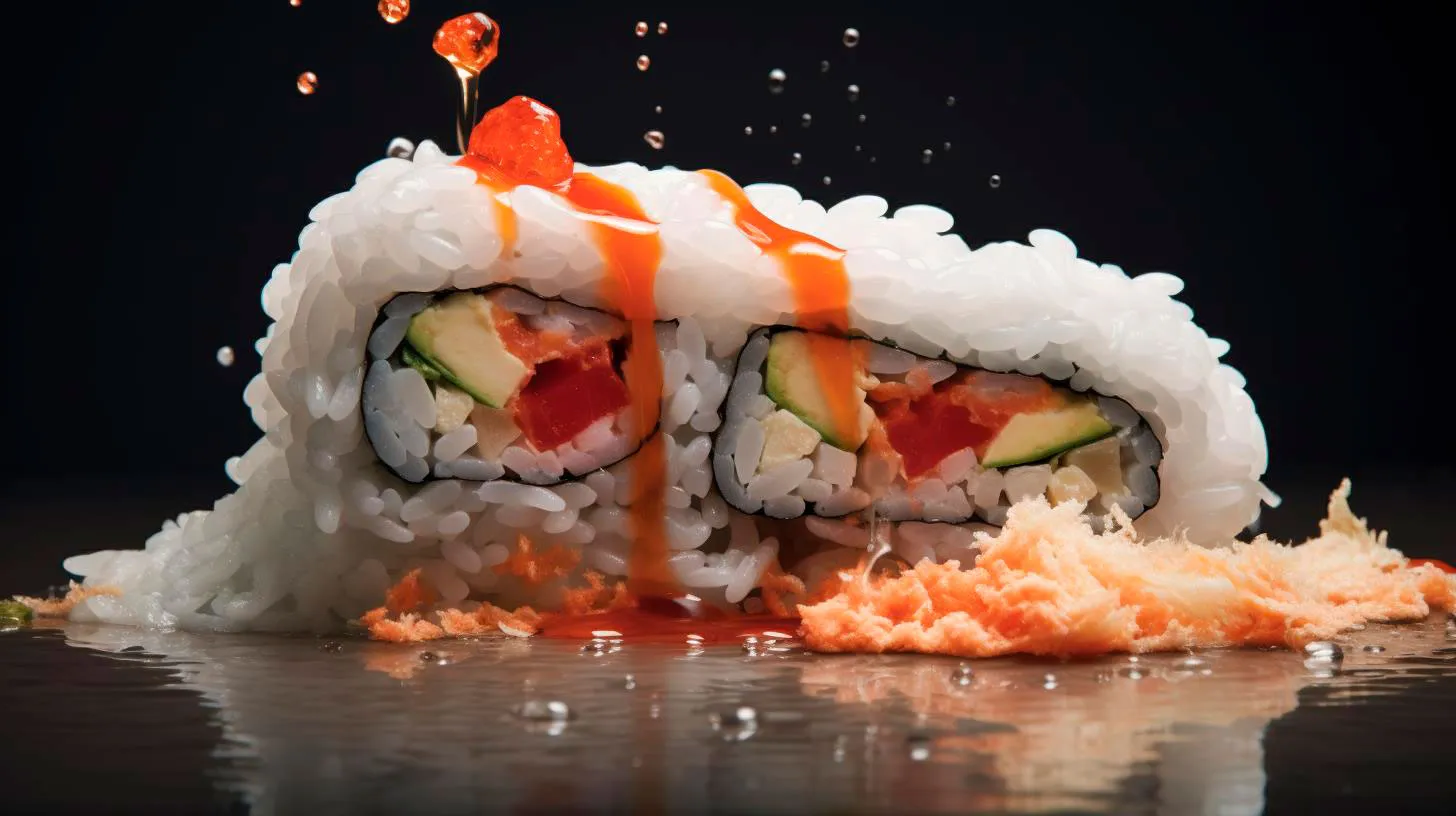An Exploration of Food Documentaries
In this article, we will delve into the world of food documentaries, exploring their significance and some noteworthy titles that have captivated audiences worldwide.
The Rise of Food Documentaries
Over the past decade, food documentaries have seen a remarkable surge in popularity. This can be attributed to several factors, including the increased awareness of health and wellness, sustainability concerns, and an interest in understanding where our food comes from. These compelling films have the power to inform, inspire, and even challenge our preconceived notions about the food we consume.
Top Food Documentaries
Let’s take a closer look at some of the most impactful food documentaries that have captivated audiences and sparked meaningful conversations worldwide:
- Forks Over Knives: This eye-opening documentary highlights the benefits of a plant-based diet and its potential to prevent and even reverse chronic diseases. It explores the research of renowned doctors and presents compelling evidence on the power of food in improving our health and well-being.
- Cowspiracy: Investigating the environmental impact of animal agriculture, Cowspiracy sheds light on the significant contribution of the livestock industry to climate change, deforestation, and water pollution. This documentary challenges conventional beliefs and encourages viewers to reconsider their dietary choices in light of sustainability concerns.
- Food, Inc.: Food, Inc. provides a comprehensive overview of the industrial food system and its impact on the health of individuals and the environment. It exposes the practices of industrial farming, highlighting issues such as animal welfare, genetically modified organisms (GMOs), and the exploitation of factory workers.
- Super Size Me: In this eye-opening documentary, Morgan Spurlock explores the effects of consuming fast food exclusively for 30 days. The film exposes the health risks associated with a fast-food diet, emphasizing the importance of making healthier food choices and adopting a balanced lifestyle.
- The Game Changers: Focusing on plant-based athletes and their performances, The Game Changers challenges the notion that animal protein is essential for optimal athletic performance. This documentary highlights the potential benefits of a plant-based diet for both individual health and athletic achievements.
These food documentaries have been watched by millions of people worldwide, driving conversations and inspiring individuals to make more informed choices about their diets and lifestyles.
The Impact and Significance
Food documentaries play a crucial role in educating and raising awareness about our food systems. They provide viewers with thought-provoking insights into the food industry, encouraging them to question the status quo and consider the consequences of their dietary choices. Here are some key takeaways from these documentaries and their impact on society:
- Increased Consciousness: Food documentaries raise awareness about the importance of conscious eating, considering factors such as nutrition, sustainability, and animal welfare. They inspire viewers to make more informed choices about their food consumption, leading to a healthier and more environmentally friendly lifestyle.
- Advocacy for Change: These documentaries often advocate for changes in policy and consumer behavior. By exposing the dark sides of the food industry, they shed light on the need for sustainable and ethical practices. This, in turn, cultivates a demand for healthier and more socially responsible food options.
- Empowering Consumers: Food documentaries empower consumers by providing them with valuable knowledge and tools to make informed decisions. By understanding the impact of their food choices, individuals can actively participate in creating a food system that aligns with their values and contributes to their overall well-being.
The Future of Food Documentaries
As the demand for food documentaries continues to grow, we can expect to see an even broader range of topics and stories being explored. With advancements in technology and an increasingly engaged audience, filmmakers have the opportunity to delve deeper into the issues surrounding our food systems. These documentaries have the power to ignite conversations, inspire positive change, and shape the future of our relationship with food.
In conclusion, food documentaries have become a powerful medium for promoting awareness, education, and change. By shedding light on the various aspects of the food industry, they encourage viewers to make more conscious choices, contributing to their personal well-being and the overall sustainability of our planet. So, grab some popcorn, sit back, and embark on an enlightening journey through the world of food documentaries.
Inspiring Culinary Journeys through Film
These films take us on a culinary journey, not only showcasing delicious dishes but also telling compelling stories that revolve around food. In this article, we explore the captivating world of culinary journeys through film, and how these movies can inspire us in our own cooking adventures.
1. Transporting Cultural Experiences
One of the biggest advantages of culinary films is their ability to transport us to different cultures and regions, allowing us to experience their culinary traditions and practices without leaving our homes. Through visually stunning depictions of traditional dishes and cooking techniques, films like “Eat Drink Man Woman” and “Big Night” give us a glimpse into the gastronomic wonders of Taiwan and Italy, respectively. These movies not only inspire us to try out new recipes but also provide a better understanding of different cultures and their unique food heritage.
- Key Takeaway: Culinary films offer a virtual passport to explore diverse cultural flavors and traditions.
2. Igniting Culinary Creativity
Watching a master chef in action on the big screen can fuel our own creativity in the kitchen. Films like “Julie & Julia” and “Chef” depict the journeys of passionate cooks who follow their dreams, experiment with innovative recipes, and create culinary masterpieces. These movies inspire us to step out of our comfort zones, try new ingredients, and develop our own unique recipes. They remind us that cooking is an art form that allows for endless creativity, fueling our desire to explore and experiment.
- Key Takeaway: Culinary films can spark creativity and encourage us to explore new flavors and techniques in our cooking.
3. Showcasing Stories of Resilience
Many culinary films delve into the struggles and triumphs of aspiring chefs, highlighting their resilience and determination to overcome obstacles. Films like “Burnt” and “Chef’s Table” not only showcase mouthwatering dishes but also shed light on the rigorous training and sacrifices involved in pursuing a culinary career. These stories of resilience motivate us to persevere in our own culinary journeys and remind us that every setback can be an opportunity for growth.
- Key Takeaway: Culinary films inspire us to persevere in our own cooking endeavors, recognizing that failures can be a stepping stone towards success.
4. Discovering Food as a Language
Food is often referred to as a universal language, and culinary films beautifully depict its power to bring people together. Movies like “Like Water for Chocolate” and “The Hundred-Foot Journey” explore the intertwining of food, love, and relationships, showcasing how a well-cooked meal can bridge cultural divides and ignite passion. These films celebrate the power of food to create connections, reminding us that the joy of cooking lies not only in the delicious dishes but also in the shared experiences and connections they create.
- Key Takeaway: Culinary films emphasize the role of food in fostering connections and bringing people together.
5. Uncovering the Secrets of Culinary Masters
Behind every delicious dish, there is often a culinary master with a wealth of knowledge and expertise. Culinary films provide insights into the lives and secrets of these masters, allowing us to learn from their experiences and techniques. The documentary series “Chef’s Table”, for example, takes viewers on a journey through the lives of renowned chefs and their culinary philosophies. These films not only inspire us to improve our own cooking skills but also offer a glimpse into the dedication and craftsmanship required to achieve culinary excellence.
- Key Takeaway: Culinary films provide valuable insights into the lives and techniques of top chefs, motivating us to enhance our own cooking abilities.
Culinary journeys through film have the power to transport us to different cultures, ignite our creativity, showcase stories of resilience, uncover the language of food, and reveal the secrets of culinary masters. By watching these films, we can indulge in a feast for the senses while gaining new perspectives on the world of food. So grab some popcorn, sit back, and let these inspiring culinary journeys take you on an unforgettable adventure.
Unveiling the Secrets of Exquisite Sushi
1. Freshness is Key
Feature: Freshness is the cornerstone of exceptional sushi. Using the finest and freshest fish and ingredients is crucial to achieving that exquisite taste.
Did you know that the average person in Japan consumes about 80 pounds of fish per year? This emphasis on fresh seafood ensures that every bite of sushi is a flavor explosion.
When choosing a sushi restaurant, prioritize places that have a reputation for using high-quality, fresh ingredients. Not only does it enhance the taste, but it also reduces the risk of foodborne illnesses.
Advantages:
- Enhances the flavor profile of the sushi
- Reduces the risk of foodborne illnesses
- Ensures a memorable dining experience
2. The Art of Rice
Feature: The rice used in sushi plays a pivotal role. It acts as the foundation, binding all the flavors together while adding a subtle sweetness to every bite.
The ideal sushi rice should be short-grained, polished, and starchy. It should also be seasoned with a delicate balance of rice vinegar, salt, and sugar, giving it that distinct sushi flavor.
Key Takeaway: The art of creating perfect sushi rice lies in achieving the right balance of stickiness and texture. The rice should hold its shape when picked up, seamlessly complementing the other components of the sushi roll.
3. Masterful Knife Skills
Feature: Behind every extraordinary sushi experience lies the skillful hands of a sushi chef. Their precise knife techniques elevate the quality of the sushi.
A skilled sushi chef knows how to slice the fish, ensuring each cut showcases the perfect balance of texture and flavor. From the thickness of the slices to the angle of the cuts, every detail matters in creating an exquisite sushi presentation.
Advantages:
- Enhances the visual appeal of the sushi
- Ensures the correct balance of taste and texture
- Demonstrates the mastery of the sushi chef
4. Creative Flavor Combinations
Feature: While traditional sushi rolls are undeniably delicious, sushi masters are constantly pushing the boundaries of flavor combinations.
Experimenting with unique ingredients and flavors allows sushi chefs to create exciting and unexpected taste profiles. From fusion sushi with elements of other cuisines to inventive toppings and fillings, the possibilities are endless.
Be open to trying new flavors and variations when exploring sushi restaurants. You never know when you’ll stumble upon your new favorite roll!
5. Presentation and Aesthetics
Feature: The visual appeal of sushi is just as important as its taste. A beautifully presented dish enhances the overall dining experience and adds to the excitement of trying new flavors.
The balance of colors, textures, and shapes on the plate is crucial in creating an aesthetically pleasing presentation. Sushi chefs often pay attention to every detail, from the arrangement of the rolls to the addition of garnishes, ensuring that each plate is a feast for the eyes.
Key Takeaway: A visually appealing sushi presentation makes the dining experience more enjoyable and memorable. It adds an extra layer of excitement and anticipation when trying each piece.
In Conclusion
Sushi is a dish that embodies precision, balance, and creativity. Its popularity around the world is a testament to its exquisite taste and artistry. By prioritizing freshness, appreciating the art of sushi rice, and exploring unique flavor combinations, you can uncover the secrets behind creating exceptional sushi experiences.
Next time you indulge in this beloved dish, savor each bite, and appreciate the dedication and craft that go into crafting exquisite sushi.
Diving into Sushi Lore
In this article, let’s dive into the fascinating world of sushi and explore its origins, different types, and cultural significance.
The Origins of Sushi
The roots of sushi can be traced back to as early as the 8th century in Southeast Asia, where people used to preserve fish by fermenting it with rice and salt. This technique allowed the fish to be stored for months, providing a reliable source of protein. This preservation method eventually made its way to Japan, where it evolved into what we now know as sushi.
Today, sushi is a culinary art form that requires precision, skill, and an understanding of the delicate balance between flavors and textures. It is a harmonious blend of fresh fish, vinegared rice, and other ingredients, all expertly handcrafted by sushi chefs.
Types of Sushi
There are several types of sushi, each with its own unique characteristics and flavors. Here are some of the most popular ones:
- Nigiri: Nigiri sushi consists of a small mound of vinegared rice topped with a slice of raw or cooked fish. It is often served with a dab of wasabi between the rice and fish.
- Maki: Maki sushi, also known as sushi rolls, are made by wrapping fish, vegetables, or other ingredients in a sheet of seaweed called nori and then rolling it with vinegared rice.
- Sashimi: Sashimi refers to thin slices of raw fish, served without rice. It showcases the freshness and quality of the fish.
- Temaki: Temaki sushi is a cone-shaped hand roll made by wrapping rice, fish, and vegetables in a sheet of nori. It is typically eaten by hand.
These are just a few examples, and the variety of sushi goes far beyond these. Each type has its own distinct presentation and flavors, making sushi a versatile culinary delight.
The Cultural Significance of Sushi
In Japan, sushi is not only a delicious food but also a symbol of tradition and respect for nature. The country’s history and proximity to the sea have shaped its culinary traditions, and sushi is an integral part of Japanese culture.
As sushi gained popularity worldwide, it became a symbol of Japan’s rich heritage. Today, many sushi restaurants aim to create an authentic Japanese experience for their customers, from the traditional decor to the meticulous presentation of sushi.
Key Takeaways
- Sushi originated as a method of preserving fish and has evolved into a revered culinary art form.
- There are various types of sushi, including nigiri, maki, sashimi, and temaki, each with its own unique characteristics.
- Sushi is not only a delicious food but also a cultural symbol in Japan, representing tradition and respect for nature.
As you embark on your sushi journey, remember to appreciate the craftsmanship and dedication behind each piece. Whether you are indulging in traditional nigiri or exploring creative maki rolls, sushi offers a palate-pleasing adventure that connects us to centuries of culinary history.



